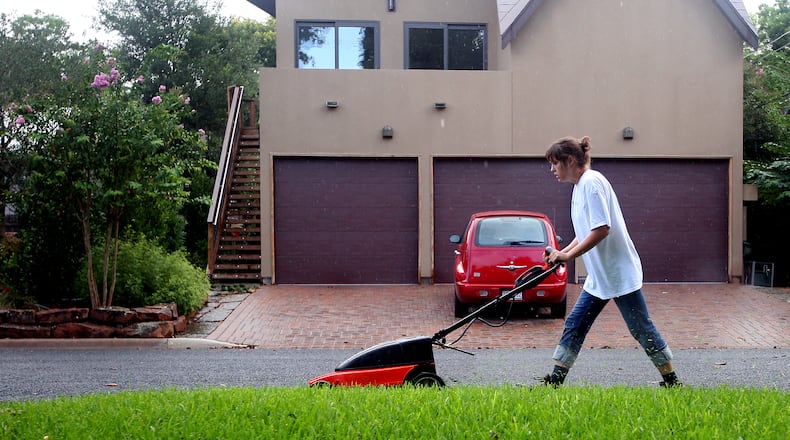After weeks or months of scorching Georgia temperatures, lawns feel just like the rest of us: wilted, parched, lifeless.
Sadly, the grass can't just soak in the pool or head into the air conditioning to revive. But Georgia experts do have tips for ways to keep a lawn alive even in the Georgia summer heat. Some of the tactics start in the cooler months of the year; others are quick strategies to try right now. All of them will keep your lawn in the "some shade of green" category until rainy or cooler weather arrives.
Ahead of the heat: To establish the type of lawn that can withstand Southern heat and possibly a bit of drought, start by preparing the soil properly, the University of Georgia Extension recommended. Take soil samples to determine how much lime and other soil amendments you will need, and have the area graded to prevent surface water from collecting.
You should also start with locally-adapted, disease-resistant turfgrass. Benefit from extensive research conducted just for your area by consulting your local extension office (1-800-ASK-UGA) to ask for recommended varieties and cultivars for your part of Georgia. Bermuda grass and Zoysia grass are both listed by the University of Georgia Turfgrass Program as having "excellent" heat resistance, for example, and the Bermuda grass also ranks "excellent" for its drought tolerance.
Mowing: Both your ordinary mowing practices and special measures you take in extreme heat will affect whether your lawn turns brown. UGA Extension recommended consistently mowing turfgrasses often enough so that not more than a third of the leaf blade comes off in one mowing. "If more plant material is removed, the grass can become stressed and more susceptible to disease-causing organisms and insects," it said.
Increase your mowing height during periods that stress the grass, including drought or sustained high temperatures. At the same time, make sure to keep your mower blades sharp (or see that your lawn care pro does the same.)
"Dull blades will shred the leaf tips, causing the turfgrass to use more water, undergo undue stress and have a ragged appearance," according to UGA’s website.
Removing excess thatch: If you don't mow, irrigate and fertilize correctly, excess thatch could accumulate and reduce water infiltration or create shallow roots, both enemies to a green summertime lawn. The UGATP recommended keeping your lawn's thatch layer to a half inch. "Thatch is most effectively controlled by topdressing with a one-fourth inch layer of topsoil," it noted. "Thatch can also be reduced by vertical mowing. Vertical mowing should be done when the turf is actively growing and at least 30 days before the 'first killing frost date.'"
It's counterproductive to attempt vertical mowing once summer's harsh weather is already a reality, though. "Vertical mowing should be avoided during periods of temperature and moisture stress, during periods of weed seed germination, or when a preemergence herbicide has been used," according to UGATP.
Watering: "The most cost-effective practice that enhances turf growth is proper irrigation," according to UGA Extension. It advised applying water to the lawn when you see wilting on a third to one half of the lawn. "For most turfgrass species, wilted turfgrasses will have a dull to bluish-green color, leaf blade folding or rolling, and footprints will remain visible for a minute or longer after walking over the area," the extension noted.
When you water, go deep. You need enough to wet the soil 6 to 8 inches deep, which works out to 1 inch of water or 600 gallons per 1,000 square feet. If your soil includes some of that famous Georgia clay, note that you might need multiple start times to prevent runoff. "If the soil becomes compacted, loosen it through cultivation such as core aeration," UGA Extension said. "This will help the water penetrate the soil."
And while it may cause a raised eyebrow or two in the neighborhood, the most efficient and effective times to irrigate are after sunset (around 9 p.m. in the Georgia summer) or, ah, before sunrise. Not only is water absorption better at those times, grass diseases are less likely when you water very early or late.
About the Author
The Latest
Featured


